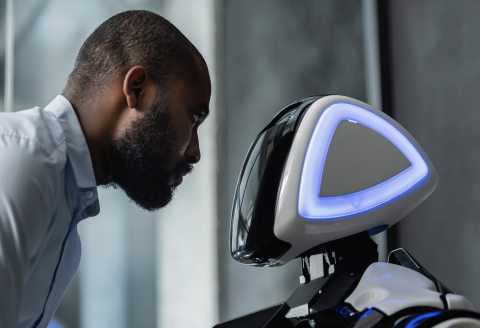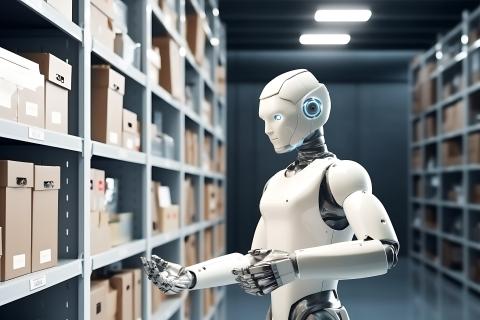From Science Fiction to Reality: The Rise of Humanoid Robots in the Workplace
January 22, 2024Humanoid robots, once the stuff of science fiction, are rapidly becoming a reality. These sophisticated machines, designed to mimic human movements and interactions, are poised to revolutionize the workplace, transforming how we work and interact with technology.
Humanoid robots offer a range of benefits that set them apart from traditional industrial robots. Their human-like form allows them to interact with humans naturally and intuitively, making collaborating and sharing workspaces easier. They can also perform a wider range of tasks, from picking and packing in warehouses to assisting with customer service and healthcare.
One of the most significant advantages of humanoid robots is their ability to handle hazardous or repetitive tasks for humans. This can significantly reduce the risk of injuries and improve overall safety in the workplace. Additionally, their dexterity and precision allow them to perform tasks more efficiently, reducing errors and increasing productivity.
Humanoid robots also pave the way for more seamless human-robot interaction (HRI). As these robots continue to develop, they will become increasingly capable of understanding and responding to human behavior, communication, and emotions. This will enable them to work collaboratively with humans in a more natural and intuitive way.
Examples of Upcoming Humanoid Robots Entering the Workforce in 2024
These are just a few of the many humanoid robots that are expected to enter the workforce in 2024. As technology advances, we can expect to see even more sophisticated and versatile robots emerge in the years to come.
- Figure 01
Figure 01 is a collaborative humanoid robot developed by Figure Robotics. The robot is designed to work alongside humans in various settings, including manufacturing, logistics, and retail. It is equipped with a powerful arm, a dexterous hand, and a camera-based vision system. Figure 01 is capable of learning new tasks through observation and is expected to be deployed at BMW's South Carolina plant in 2024.
- Agility Robotics Digit
Digit is a bipedal robot developed by Agility Robotics. The robot is designed for warehouse applications and is capable of picking and placing items, working with conveyor belts, and navigating around obstacles. Digit is powered by a battery and is able to work for up to eight hours on a single charge. Agility Robotics is partnering with Amazon to test Digit in its warehouses, and the robot is expected to be commercially available in 2024.
- Apptronik Apollo
Apollo is a humanoid robot developed by Apptronik. The robot is designed for a variety of applications, including manufacturing, logistics, and healthcare. Apollo is equipped with a powerful arm, a dexterous hand, and a variety of sensors. The robot is capable of autonomous navigation and manipulation and is expected to be commercially available in 2024.
- Boston Dynamics SpotMini
SpotMini is a quadrupedal robot developed by Boston Dynamics. The robot is designed for indoor applications and can traverse uneven terrain, climb stairs, and open doors.
SpotMini is powered by a removable lithium-ion battery pack and can work up to four hours on a single charge. Boston Dynamics is currently testing SpotMini in various industries, and the robot is expected to be commercially available in 2024.
- Honda Asimo
Asimo is a humanoid robot developed by Honda. The robot has been in development for over two decades and is one of the most advanced humanoid robots in the world. Asimo is capable of walking and running, as well as performing a variety of tasks, such as opening doors, shaking hands, and playing soccer. Honda is currently testing Asimo in various applications, and the robot is expected to be commercially available in 2024.
Prepare the Next Fleet of Humanoid Robots
As humanoid robots continue to evolve, they are poised to redefine the modern workplace, ushering in a new era of human-robot collaboration. Their adaptability, dexterity, and ability to handle hazardous or repetitive tasks will transform various industries, from manufacturing and logistics to healthcare and customer service. By augmenting human capabilities, humanoid robots will enhance productivity, safety, and overall efficiency, shaping a future where technology seamlessly integrates into our work environments.
Want to learn more about mechatronics? Capitol offers bachelor’s programs in both Mechatronics Engineering and Mechatronics and Robotics Engineering Technology. Contact admissions@captechu.edu to learn more.




